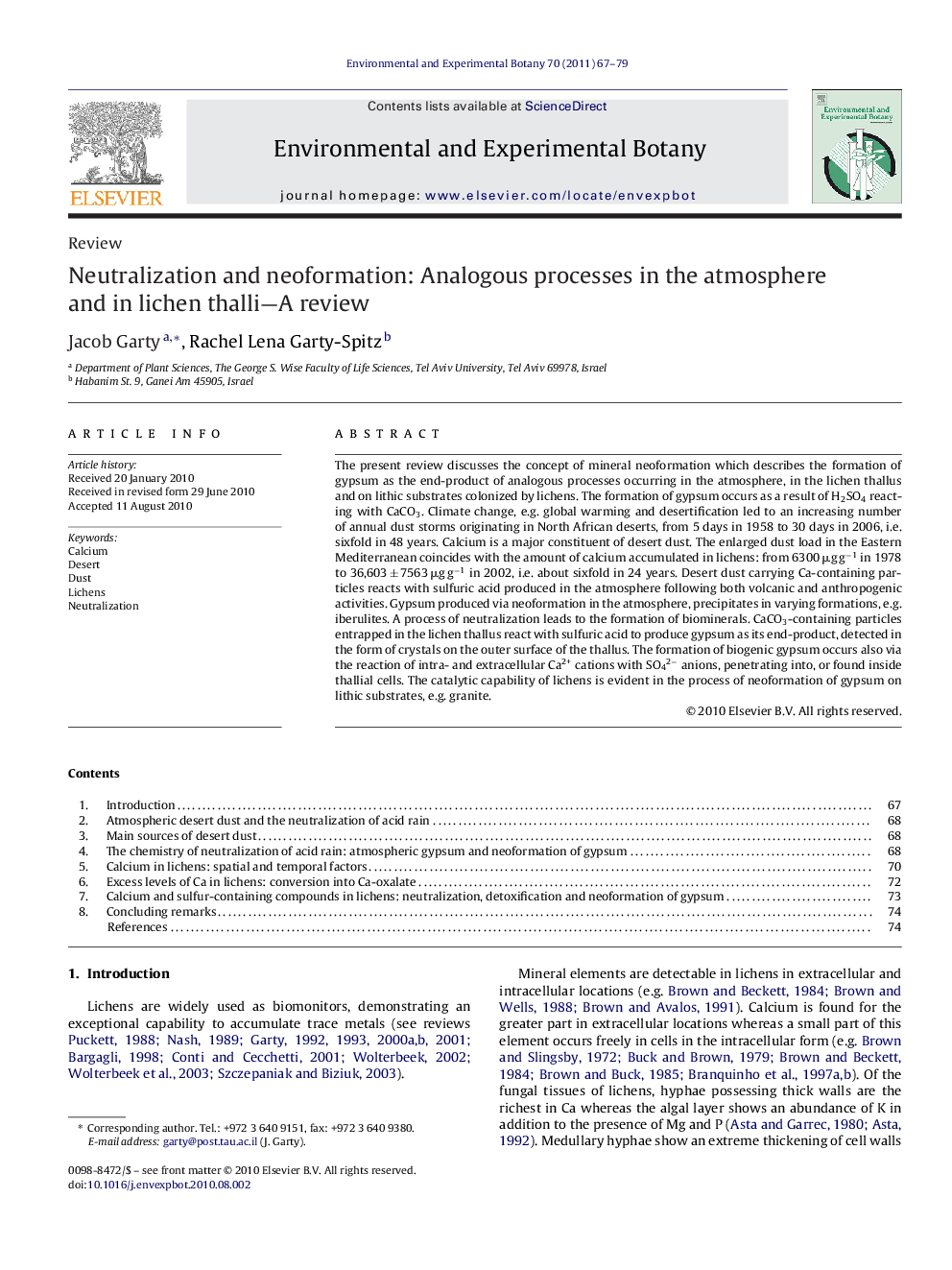| Article ID | Journal | Published Year | Pages | File Type |
|---|---|---|---|---|
| 4554916 | Environmental and Experimental Botany | 2011 | 13 Pages |
The present review discusses the concept of mineral neoformation which describes the formation of gypsum as the end-product of analogous processes occurring in the atmosphere, in the lichen thallus and on lithic substrates colonized by lichens. The formation of gypsum occurs as a result of H2SO4 reacting with CaCO3. Climate change, e.g. global warming and desertification led to an increasing number of annual dust storms originating in North African deserts, from 5 days in 1958 to 30 days in 2006, i.e. sixfold in 48 years. Calcium is a major constituent of desert dust. The enlarged dust load in the Eastern Mediterranean coincides with the amount of calcium accumulated in lichens: from 6300 μg g−1 in 1978 to 36,603 ± 7563 μg g−1 in 2002, i.e. about sixfold in 24 years. Desert dust carrying Ca-containing particles reacts with sulfuric acid produced in the atmosphere following both volcanic and anthropogenic activities. Gypsum produced via neoformation in the atmosphere, precipitates in varying formations, e.g. iberulites. A process of neutralization leads to the formation of biominerals. CaCO3-containing particles entrapped in the lichen thallus react with sulfuric acid to produce gypsum as its end-product, detected in the form of crystals on the outer surface of the thallus. The formation of biogenic gypsum occurs also via the reaction of intra- and extracellular Ca2+ cations with SO42− anions, penetrating into, or found inside thallial cells. The catalytic capability of lichens is evident in the process of neoformation of gypsum on lithic substrates, e.g. granite.
Research highlights▶ Processes of global warming and desertification lead to enlarged dust loads of African origin. ▶ Atmospheric desert dust neutralizes acid rain, leading to the neoformation of airborne gypsum. ▶CaCO3-containing particles entrapped in lichen thalli neutralize airborne sulfuric acid and produce gypsum. ▶ Chemically, the lichen thallus is a microcosm mirroring atmospheric mega-processes.
